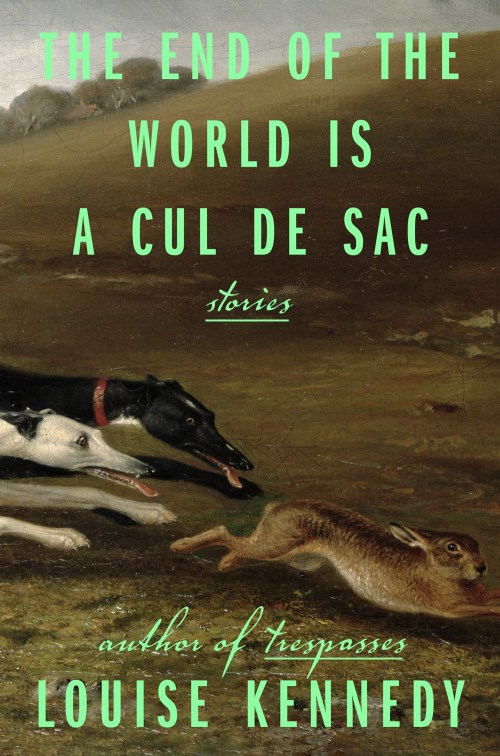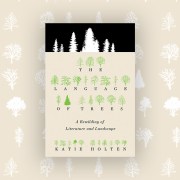[ad_1]
What do we ask of art? How, indeed, can we know what it is? On this, the philosophers tend to disagree. At some level, we know it when we see it, as the Supreme Court once said about some other hard-to-define thing. In the twenty-first century, it is probably the most politic to say that art is anything that considers itself to be art—even as the very same socio-economic forces behind such bonhomie rhetoric create a marketplace with antediluvian restrictions on what can actually be allowed to exist. That small matter. Because regardless of what art is, it seems that in our modern day we demand that it readily acquiesce to the most anodyne interpretations of positivity that may be waged against it. In short, the market scrupulously attends morality. As such a rosy view of the world in no way represents reality, it is refreshing indeed to encounter a book that challenges this stagnate status quo. And if the results are at times mixed, Louise Kennedy’s atmospheric, cynical collection The End of the World is a Cul de Sac certainly qualifies as a worthy attempt, sending ripples if not shockwaves against that monotone edifice, marketability.
Perhaps driven by Kennedy’s unusual background—as she says in her covering note, nearly three decades as a chef before coming to fiction later in life—that The End of the World is a Cul de Sac seems to care little for (much of) the trends in publishing, at a more nuanced level at any rate. Surely her origins in Ireland, whose always-fearless literary ancestry seeps into the book, and the success of her first novel play their roles as well. The collection, on the surface, seems in many ways cut from the current cloth: women in their 20s, 30s, and 40s navigating the insipidity of domestic life, usually via the medium of a useless-at-best husband or boyfriend. In this way, The End of the World is a Cul de Sac is quite with the times–it is true.
When he got to the house, Clary was sitting on the gatepost. She was in her pajamas, feet flexed to keep on her polka-dot wellingtons, a plastic tiara holding her hair off her face. Peter opened the passenger window.
Can I take you some place, madam?
Will you let me drive?
He nodded. She came in the window headfirst and climbed onto his knee. She put her left hand on his on the gearstick. Her fingers were cold. Peter worked the pedals while she creaked through the gears, letting her think she was driving all by herself. At the top of the driveway she pulled the steering wheel hard. The wing mirror scraped against the porch. She drew in her shoulders and glanced back at him, tears collecting in her eyes. He straightened the van up and turned off the engine.
You might need to do the Driver Theory Test, he said.
He carried her into the house. It was as he’d left it a couple of hours earlier, except for a saucepan of water on the stove, dead matches scattered among the gas jets. He sat her on the settee, tucking a throw around her.
I’m hungry, Daddy.
I’ll put us on a bit of breakfast. He filled the kettle and lit a fire under three eggs.
Kennedy is skilled with scenic movement, and this example, from the collection’s eponymous and strongest piece, is an especially good one. Emblematic of the manner in which her heroines (and, as here, occasional heroes) move through the overlapping spaces of home and world, we can see in just a handful of lines the rich father-daughter dynamic able to be created in-scene. This story, centered around a husband and father raising his daughter in the midst of his wife and her mother’s battle with depression, could serve as thesis for the book as a whole—on that, inventively, approaches the problem from his perspective. While that aspect represents a break from the collection’s typical approach, it is successful, and thereby illustrative, here. If The End of the World is a Cul de Sac is fundamentally concerned with how modern life and relationships erode the individual, especially women, then the impact of such a dynamic on those around them is a key component, one that a story such as this one effectively interrogates.
Throughout, Kennedy’s comfort with the spectral Irish landscape is notable and well-used, along with representing her most vital link to that rich literary ancestry which suffuses the book with a propellent atmosphere. This is also seen in the above quote, and the dubious stylistic tics, the very essence of trendy—whatever the genesis of the recent aversion to quotation marks may be, it’s not an adequate one—are easily enough overlooked in the face of the rich characterization and efficient world-building that mark these stories. The End of the World is a Cul de Sac faces a problem common to much of fiction being published today: these stories have all been told. The solution will always lie in style, and Kennedy’s is original enough to give her collection its own trademark, a compelling how in telling a familiar what.
But that subject matter is not entirely familiar—there is an insouciance running through the collection, one that deigns not to entangle itself in any sort of feel-good patterning in narrative arc or ethical equilibrium. And so here we come to art. While The End of the World is a Cul de Sac cannot be said to truly exemplify what we might call narrative amorality or thereby make as bold or inspired a statement as, say, Rachel Cusk, there is at least a willingness here to challenge convention, especially around the rendering of female protagonists and the question of what their stories should be, how they should be told, and to what degree they must inhabit questions of morality in their encounters with the public sphere. That terrain—the narrative of broadly existentialist introspection, minimally and inimically concerned with society—has since the advent of recognizable fiction been almost exclusively the domain of men and male characters (excepting, bien sûr, Cusk), and as such represents a crucial inroad for feminist fiction to cut.
The End of the World is a Cul de Sac, then, is an important book in this respect; for even if it does not—by design, to be sure and to be fair—venture deep into the underworld, it wades a bit into the river. If art is to survive the decay of consumerism, we cannot demand that it be a mere cupbearer for self-ordained morality, rotted scaffolding around the city on the hill. Society does not need more self-help guides, and if literature is reduced to such a role it will die out coetaneous with the fad. What is needed instead is the cut of the thorn, the rousing of the blood. By maintaining its idiosyncratic worldview and finding a way to elegantly depict the people and places within, The End of the World is a Cul de Sac meets this urgent need of art—however we may define it.

FICTION
The End of the World is a Cul de Sac
by Louise Kennedy
Riverhead Books
December 5th, 2023
[ad_2]
Source link

